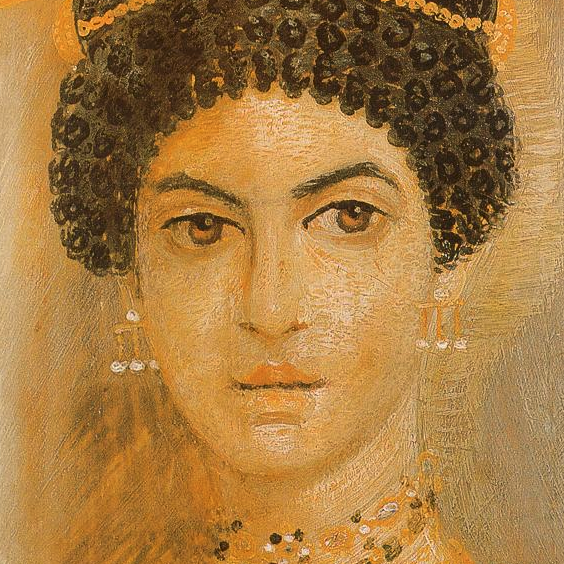The dwarfs, Gandalf and Bilbo have now reunited but are still far from out of trouble. Gandalf points out that the Goblins are quite likely to be chasing them soon and on top of that they are in wolf country. As it turns out the wolves and the goblins have a working agreement, if not a complete alliance. The situation is therefore precarious. So it is no surprise that as night falls the party find themselves surrounded by wolves. This is a bit of bad luck because as it happens they are on the very spot that the wolves have arranged to meet with their partners in crime for a spot of village raiding.
In fact these turn out to be a bit more serious than straight wolves, these are wargs.
Warg is not strictly an invention of Tolkien. It just about counts as an English word for an unusually large wolf, though it hadn’t been used for centuries until it pops up in the hobbit. The idea that a warg has magical properties above and beyond standard wolves again is just about traceable to Norse mythology. The great wolf Fenrir would be a warg,
and he is supposed to be the creature that is going to kill Odin so that suggests a fairly high spiritual pay grade. But I think that basically wargs are another product of the fertile Tolkien imagination. They have their own language and are pretty good strategic thinkers, although they don’t have the brain power of the goblins. In the Lord of the Rings we get to hear more about wargs, but for the purposes of the Hobbit they are simply large ferocious wolves.
The dwarfs are hopelessly outnumbered and have no chance of fighting them off or of running away. Wolves are obviously a lot quicker on their feet than dwarfs. To escape they climb trees and Gandalf finally – this is the sixth chapter – comes up with some actual magic. He creates some fire and uses it to fire at the wolves. This causes them some confusion but is hardly a game changing strategy. But even if it were, the arrival of the goblins makes the travellers’ position hopeless. The goblins are clearly amused by the wolves’ reaction to the fire and have a good laugh at their expense. They then proceed to compose a comic song to mock the dwarfs whose demise seems imminent and unavoidable.
At this point, there is an unexpected turn of events. A troop of eagles turn up and rescue the dwarfs, hobbit and wizard from the trees, snatching them right out of the hands of their enemies. This is a lucky escape. The eagles just happened to notice what was going on. As luck would have it the eagles’ leader owed Gandalf a favour after he cured him of an ailment, but it was a pure fluke that they should be active in the region just when it counted.
In the Silmarillion we hear that eagles are the emissaries of Manwe, the demi-god in charge of Middle Earth. But there is no hint about this feature in the Hobbit, they come across as simply big talking versions of biological eagles from our own world. But they do have some interesting characteristics. For a start they live right at the tops of the mountains. This is obviously a safe place to live, but I think the symbolism is as important as security considerations. Just as Gollum is very much a creature of dark subterranean places, the eagles are natural inhabitants of higher realms.
This has strong parallels to the role of eagles in Greek mythology. Eagles were sacred to Zeus. It is such a familiar linkage between eagles and power that we hardly notice it. The Romans used eagles as the emblems of their legions. The Germans christened the opening day of their bombing campaign against Britain in 1940 ‘Eagle Day’. Zeus used eagles as messengers as well as a symbol. For example he sent an eagle to fetch Ganymede and install him as the cup bearer of the gods. (Ganymede is commemorated in stars in the constellation of Aquarius). Zeus also used an eagle for his more sinister side, sending one to punish Prometheus on a daily basis for stealing fire from the gods.
Tolkien’s eagles in the Hobbit don’t seem to be under anybody in particular’s direct control. But they do have the same ambiguous moral nature of Zeus. They are for instance, quite relaxed about helping themselves to farmers’ sheep. But they are happy to thwart the schemes of goblins and evidently regard their debt to Gandalf as something that should be paid.
So the eagles come across as independent spirits, ferocious but fair. Critics haven’t failed to notice that they also play the role of plot fixers of the last resort throughout Tolkien’s fiction. Whenever he has written his characters into a particularly sticky situation eagles are quite likely to turn up to sort things out. Building in a bit of unpredictability into their character helps with this, since if they were available on tap they would be able to solve most problems with little dramatic tension. The journey across Mirkwood in the next couple of chapters for instance would have been considerably shorter if an eagle could have been booked. As it is, the eagles are only prepared to land their guests a little way further on their journey. They are back on course but their immediate problem is, once again, lack of provisions.

